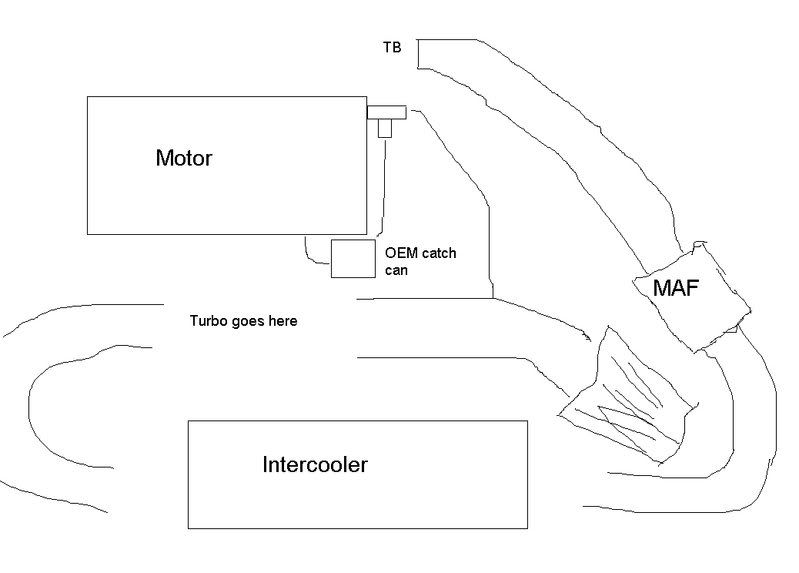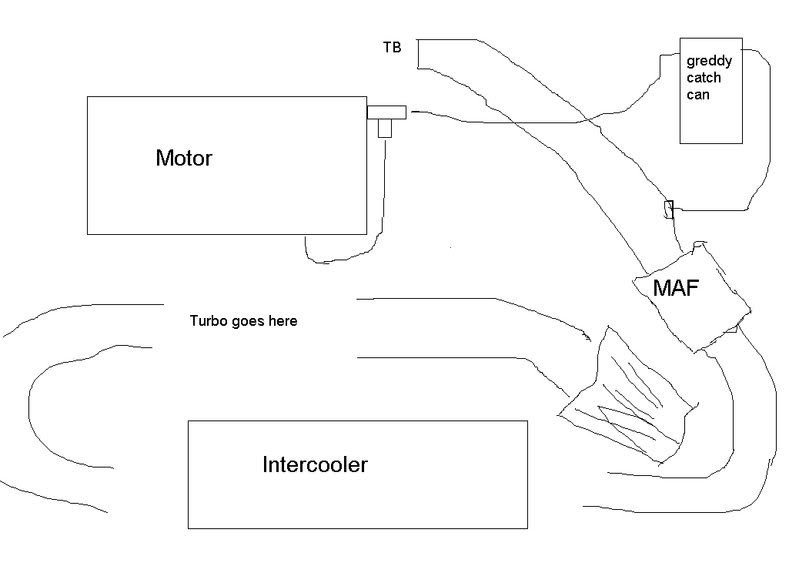Hey guys, I recently dynoed my car and the guy recommended I move around some hoses on my oil separation system. I made some ghetto pics to make it easier to understand.
THIS IS WHAT I CURRENTLY HAVE. Bascally there is a breather filter on the T on the valve cover

WHAT THE DYNO SHOP SUGGESTED. Remove that filter and run a hose from there to the intake pipe before the turbo. He said the added pressure will expand the piston rings more yeilding more power.

ANOTHER SETUP. I'm looking at pics of turbo setups and I've seen something like this on a couple of them. Would it work?

Any advice or another setup you suggest is greatly appreciated.
THIS IS WHAT I CURRENTLY HAVE. Bascally there is a breather filter on the T on the valve cover

WHAT THE DYNO SHOP SUGGESTED. Remove that filter and run a hose from there to the intake pipe before the turbo. He said the added pressure will expand the piston rings more yeilding more power.

ANOTHER SETUP. I'm looking at pics of turbo setups and I've seen something like this on a couple of them. Would it work?

Any advice or another setup you suggest is greatly appreciated.








 Be the first to like this post.
Be the first to like this post.





 Back to top
Back to top
